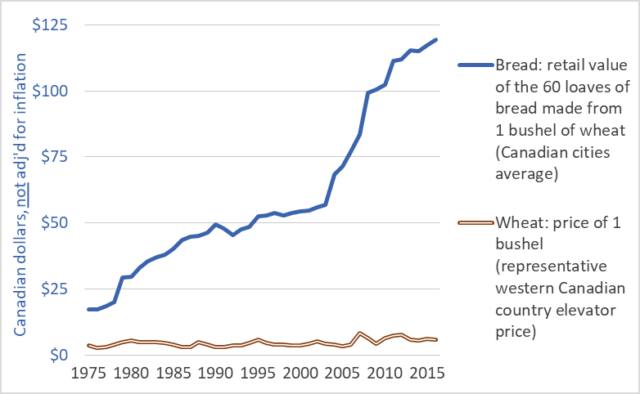Didn't want to get furrow's thread derailed about moisture but started thinking about production numbers in this province in a dry year...
If Saskatchewan still produces a reasonable crop based on better farming practices in a dry year....
Compared to other dry years....
If a canola crop can make 35bpa on 3.5 inches of rain
If wheat can run 30 bpa on the same amount ...
Here is the zinger ...
Why do they need to invest billions in irrigation ?
Has any of the engineers ever consider the advances in better farming practices when they write a study to say irrigation will pay...
Drove by the 10000 acre irrigation project and I seen a lot of dryland crops being irrigated on publicly funded and maintained irrigation project...
Those crops won't make double whats being grown on the dryland acres beside them...
There was canola, flax, peas under the pivots...potatoes, beans i understand .
Here is a math explanation....the riverhurst project cost around 90million back in the early 90s....
it took 30 years to get to 15000acres and every acre over the 10000 acre mark received more government money...
90,000,000 at a 3 percent return back to the taxpayer is 2,700,000 in interest ...no principal...
2,700,000 over the 10000 acres is 270 an acre if it was returning anything to the taxpayer...
plus 120 operating cost which includes the electricity to run pumps , maintenance costs etc...and that is infilled by government of 40 bucks an acre...
so minimum cost to deliver water to the quarter line is 270 plus 80 is 350 bucks an acre ...
side note: they don't pay a return to the taxpayer for the project nor principal of the project as it was recently given to them...
So they pay 80 bucks an acre to have water delivered to grow a crop of canola or wheat or flax ....partly funded by the taxpayers plus there own on farm costs of running and maintaining their pivots...
Here is the smell test to irrigation and being publicly funded....If it can't be done on its own by those that benefit as it is promoted as a economic driver....why should government fund it while leaving out the rest of the dryland industry that is an economic driver...
Bottom line to all this bitching is ...why are dryland farmers also not receiving 40 bucks an acre in government support that will definitely be returned to the economy?
disclaimer....none of my crops will make 20bpa and some won't see a combine...
If Saskatchewan still produces a reasonable crop based on better farming practices in a dry year....
Compared to other dry years....
If a canola crop can make 35bpa on 3.5 inches of rain
If wheat can run 30 bpa on the same amount ...
Here is the zinger ...
Why do they need to invest billions in irrigation ?
Has any of the engineers ever consider the advances in better farming practices when they write a study to say irrigation will pay...
Drove by the 10000 acre irrigation project and I seen a lot of dryland crops being irrigated on publicly funded and maintained irrigation project...
Those crops won't make double whats being grown on the dryland acres beside them...
There was canola, flax, peas under the pivots...potatoes, beans i understand .
Here is a math explanation....the riverhurst project cost around 90million back in the early 90s....
it took 30 years to get to 15000acres and every acre over the 10000 acre mark received more government money...
90,000,000 at a 3 percent return back to the taxpayer is 2,700,000 in interest ...no principal...
2,700,000 over the 10000 acres is 270 an acre if it was returning anything to the taxpayer...
plus 120 operating cost which includes the electricity to run pumps , maintenance costs etc...and that is infilled by government of 40 bucks an acre...
so minimum cost to deliver water to the quarter line is 270 plus 80 is 350 bucks an acre ...
side note: they don't pay a return to the taxpayer for the project nor principal of the project as it was recently given to them...
So they pay 80 bucks an acre to have water delivered to grow a crop of canola or wheat or flax ....partly funded by the taxpayers plus there own on farm costs of running and maintaining their pivots...
Here is the smell test to irrigation and being publicly funded....If it can't be done on its own by those that benefit as it is promoted as a economic driver....why should government fund it while leaving out the rest of the dryland industry that is an economic driver...
Bottom line to all this bitching is ...why are dryland farmers also not receiving 40 bucks an acre in government support that will definitely be returned to the economy?
disclaimer....none of my crops will make 20bpa and some won't see a combine...

Comment